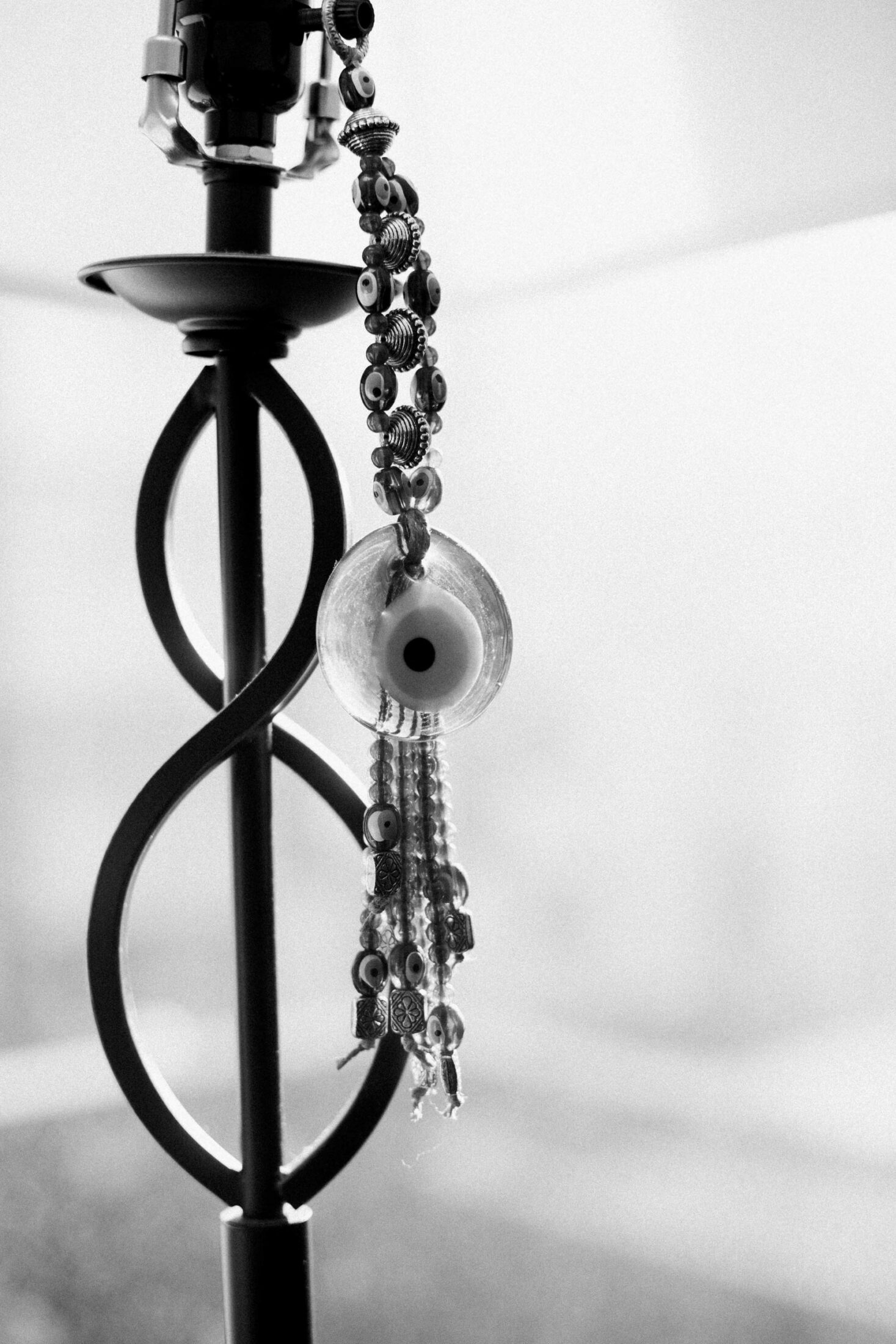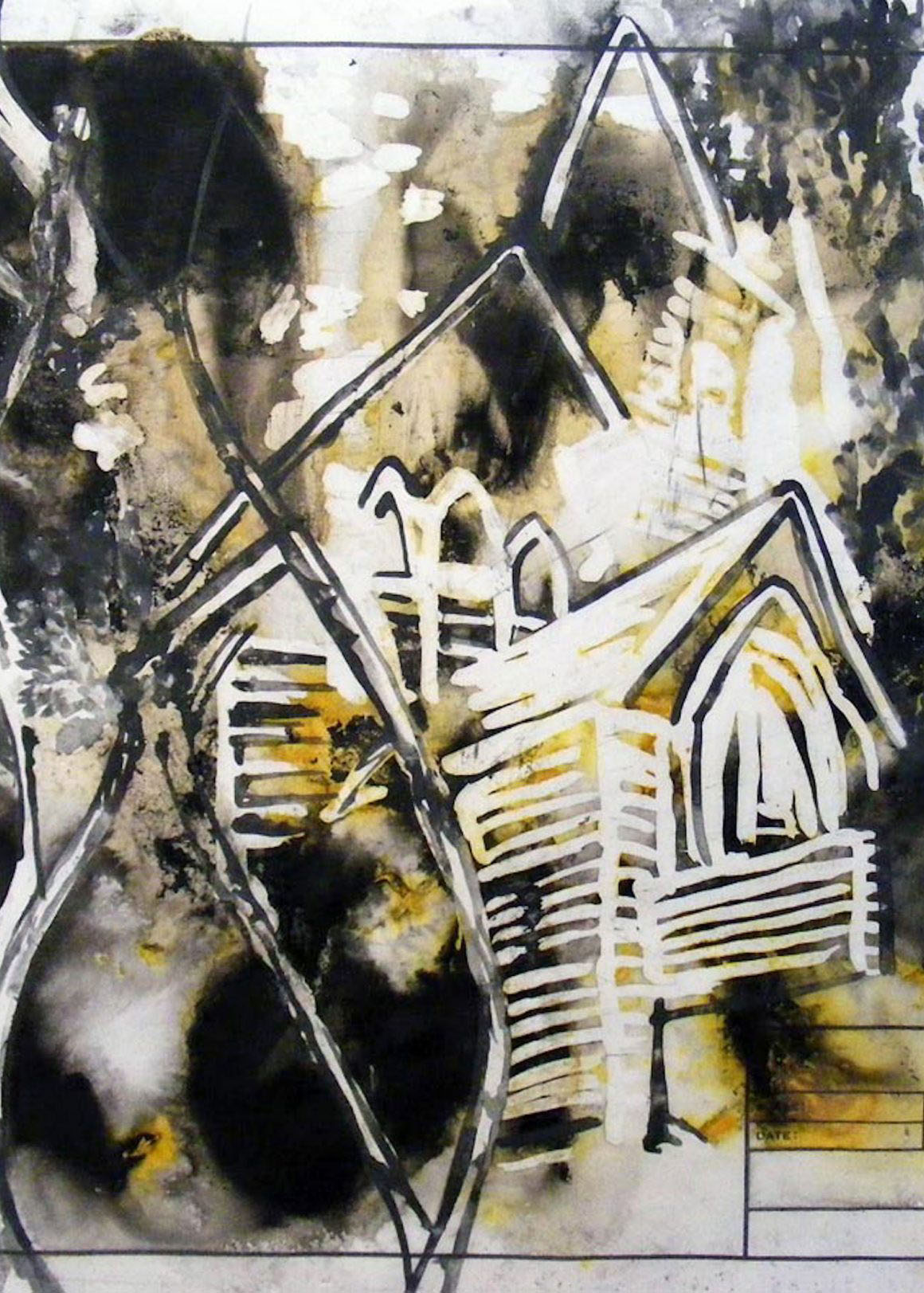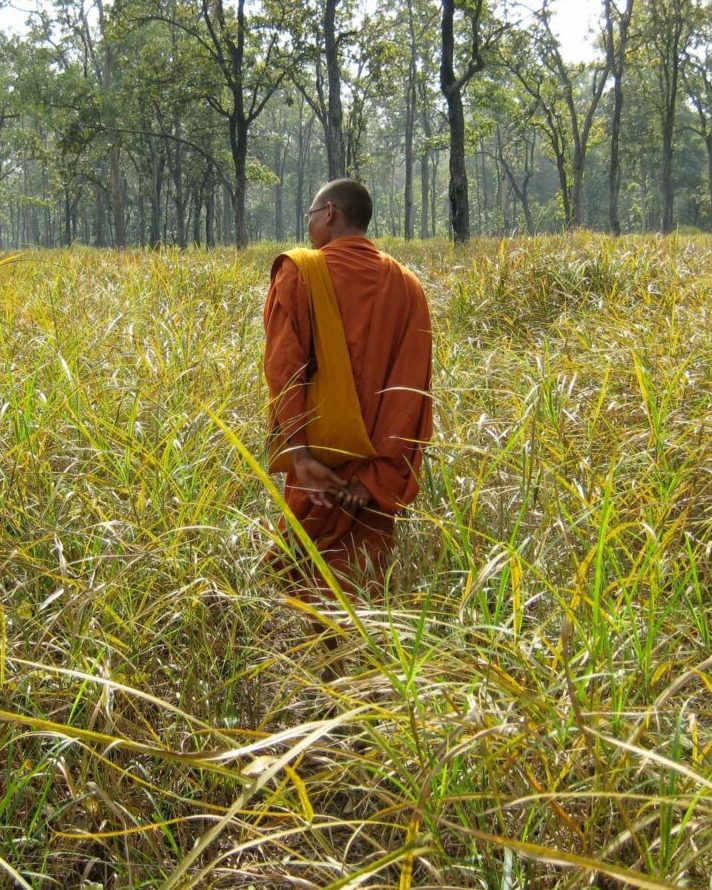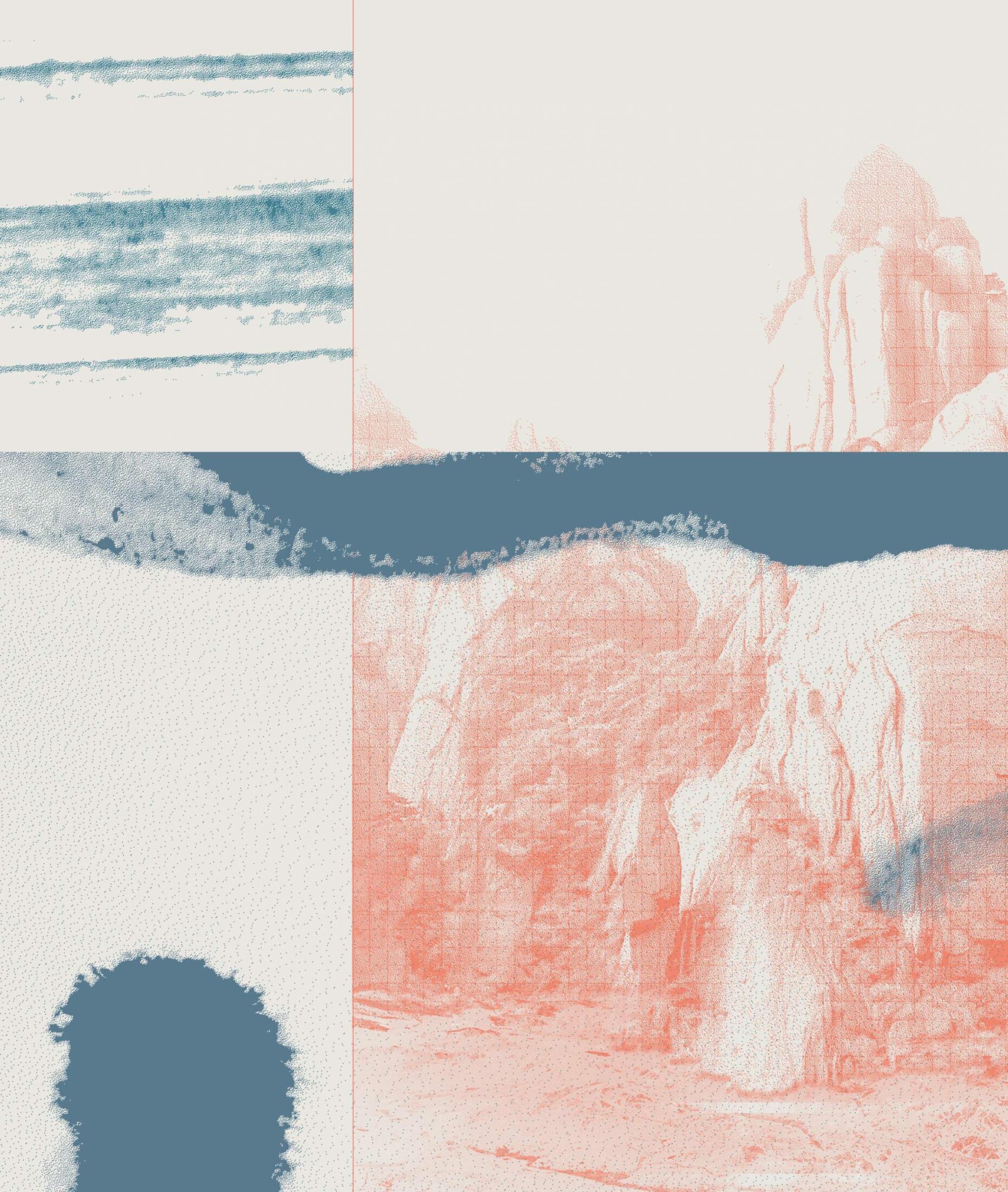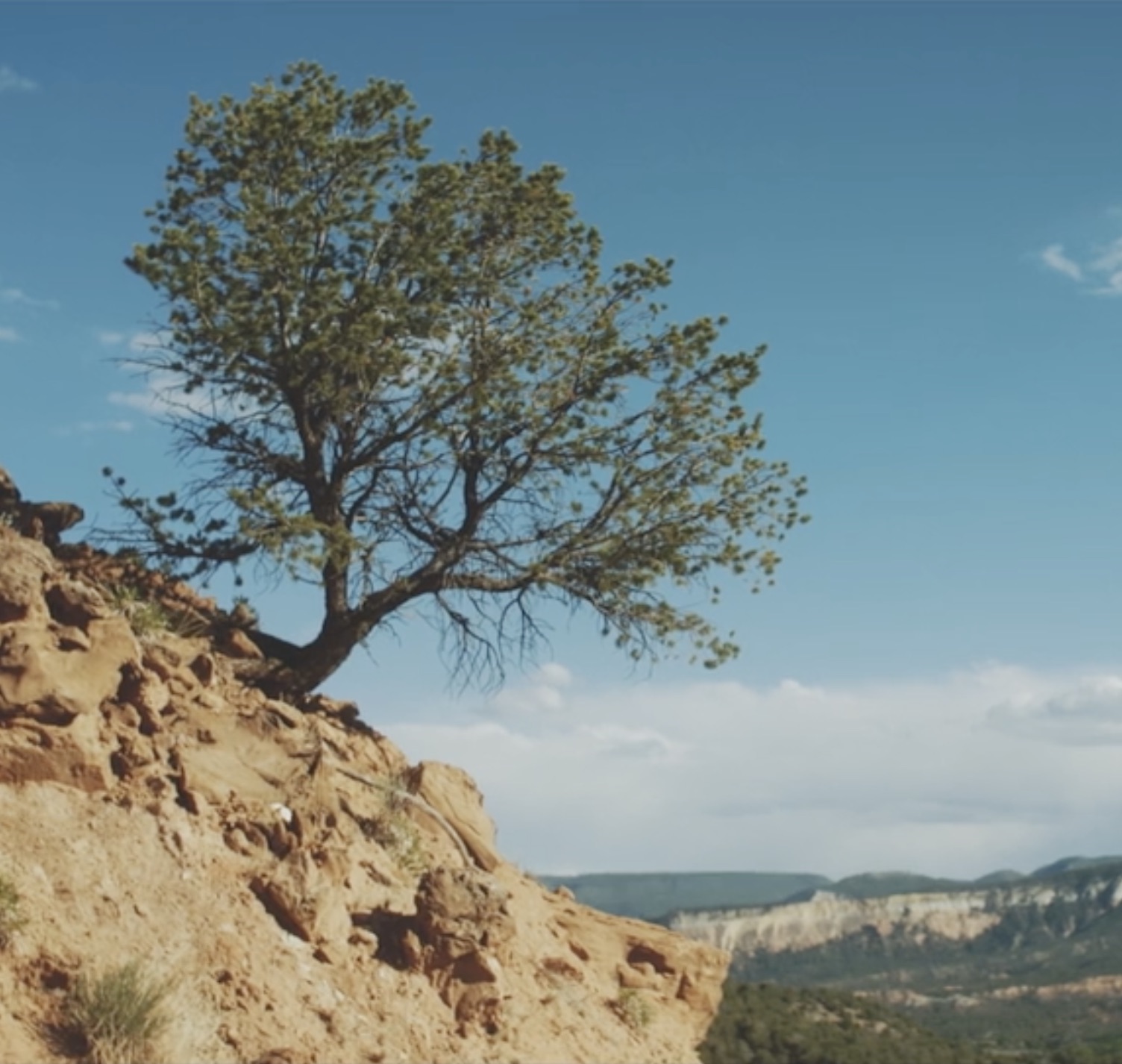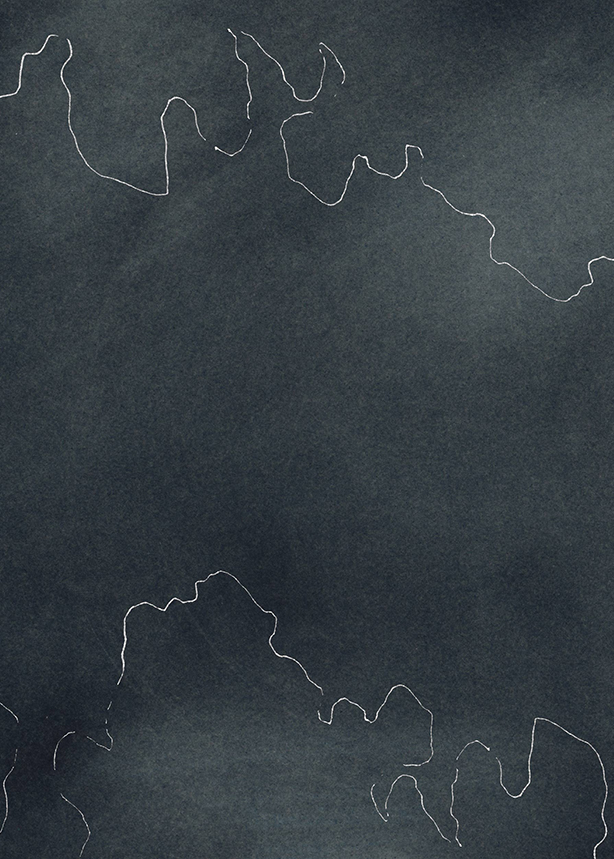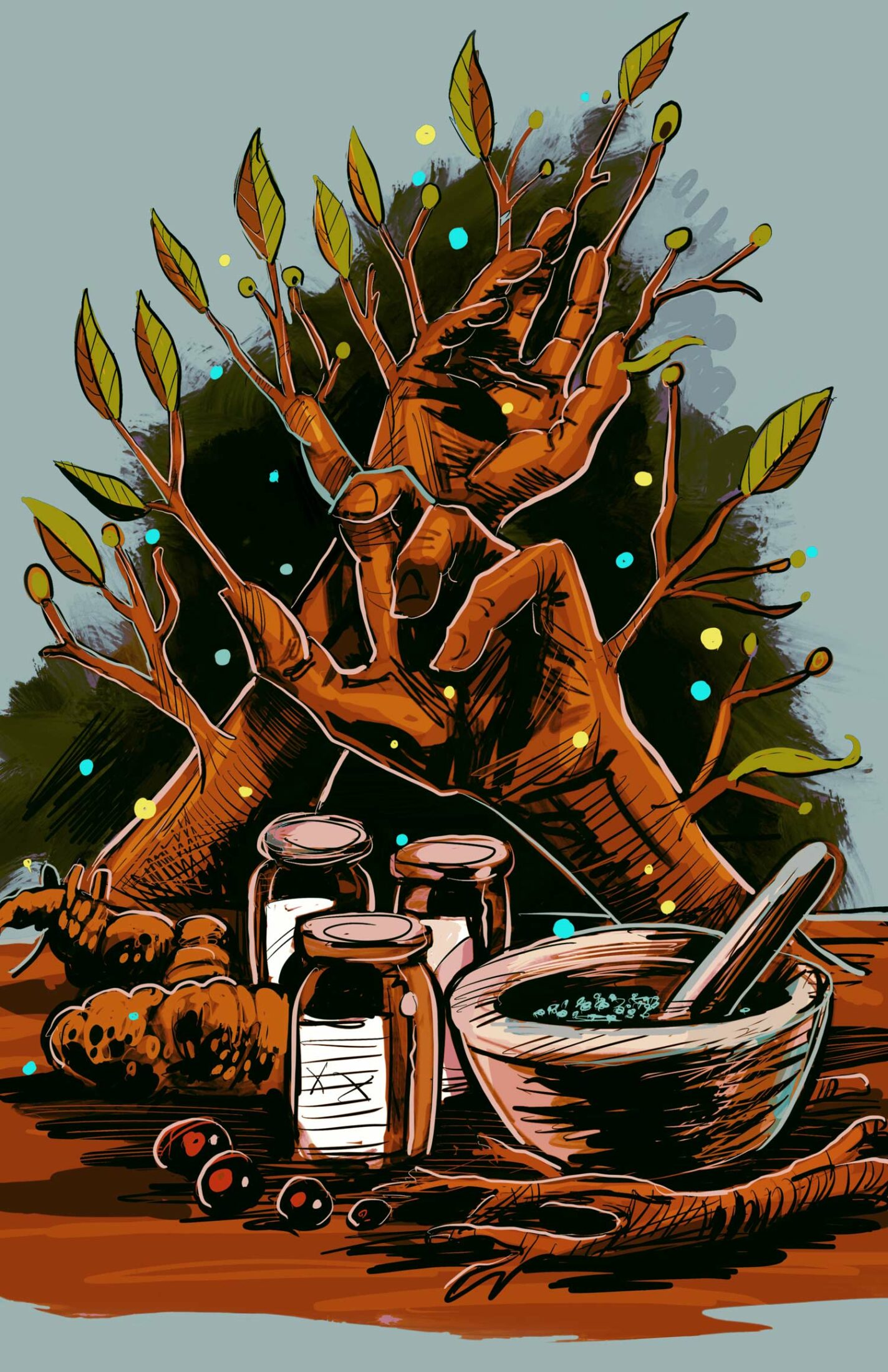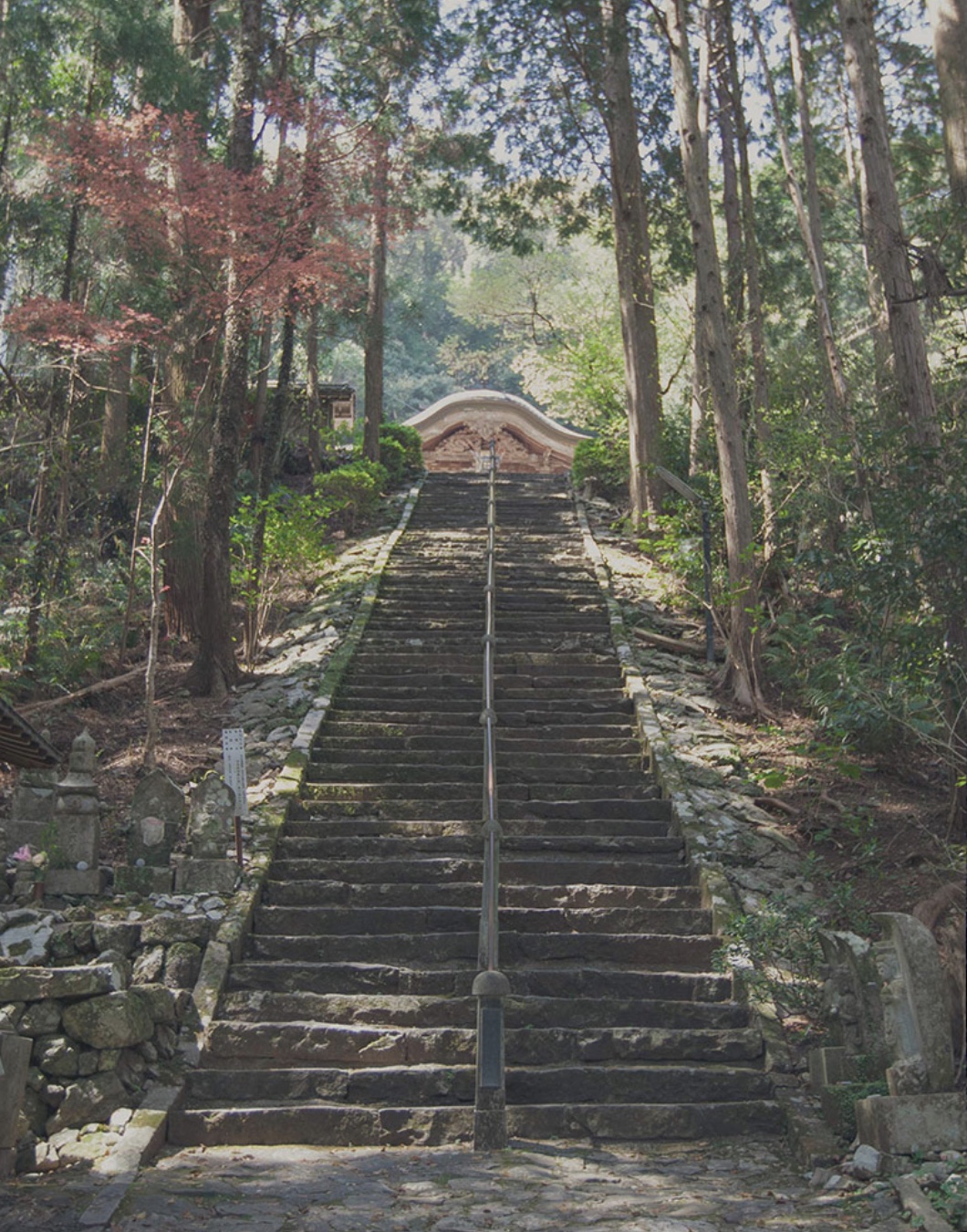

From the photo essay “Silent Landscapes” by Gabriela Torres Ruiz,
© 2018 Artists Rights Society (ARS), New York / VG Bild-Kunst, Bonn
Ecological Conversion
Paul Elie is a senior fellow in Georgetown University’s Berkley Center for Religion, Peace, and World Affairs and a regular contributor to The New Yorker. He is the author of two books, The Life You Save May Be Your Own and Reinventing Bach.
Gabriela Torres Ruiz is a Mexican artist and photographer. She moved to Berlin in 1996, where she worked as an architect until 2013. She has worked as an autodidact with black-and-white photography and as a theater photographer. Her exhibits include the solo exhibition Silence at EMOP Berlin, 2018; the Squares 2018 group exhibition at CICA Museum in Korea; and the GESTE Paris 2018 group exhibition.
Struck by the thought that the Catholic Church and the natural world have traded places as sources of transcendence, Paul Elie wonders how religion and the natural world might come together for shared renewal.
1
We got to the campground after dark and chose a site by the light of a full moon, which lit up the outline of our black minivan.
Colorado: mountains, starlit skies, stadium-sized gas stations, and now Mesa Verde National Park—a gatehouse and ten miles of two-lane road tracing a line of switchbacks forty-five hundred feet up a mountain. After the Badlands, the Black Hills, Wind Cave, Yellowstone, Grand Teton, Grand Canyon, Monument Valley—astonishing, each and all—this would be our last national park, a last stop in the West before the long, lateral slog to Washington, DC, and a last encounter with the wilderness.
I pitched the tent by moonlight, with the boys as drowsy, balky assistants. They piled in and zipped the door. Lenora sat at a picnic table, eyeing the night sky. I crunched down the road toward the latrines. The other tents were dark and silent, cars battened down as if for the Judgment.
A few minutes earlier, I had accidentally backed the van into a concrete bulwark, mistaking a dumpster site for a campsite. The campground, fully occupied, was probably more populous than most towns in the area. It was not remote or untouched or untamed. And yet, having driven up after dark on roads marked “closed” in winter, I felt out in the wilderness, or nearly so. I relished the feeling, an inward corollary to the night sky.
This is why we had driven cross-country. This had been the idea when Lenora and I were bent over the atlas at the oak table in our apartment in Brooklyn. She and I, longtime New Yorkers, had traveled to Peru a few months after we met; we had gotten a tent and camping gear for each other as wedding presents. Now, three children later, we would venture forth into the natural world so that our sons could know it firsthand, and so that we might know it all together. She and I were converts, but we hoped that they might feel at home in the wilderness while they were still in childhood.
There was a sign stuck to the latrine door:
NONDENOMINATIONAL WORSHIP
MORNINGS, 8:30 A.M.
GROUP SHELTER B
ALL WELCOME
I went in and used the facilities, and when I came out, I considered the sign again. I felt surprised, even offended. Frank and open worship in a national park, announced with a sign at the latrines—it seemed strange, wrong, even a desecration, like Coke cans on Mount Everest.
2
Some years later, I am sitting at a desk in a windowless space in Brooklyn, trying to understand why the sign seemed so out of place.
Religious liberty had been in the news all summer, a drumbeat from the East. I felt, progressive New Yorker that I am, that religion and government don’t mix, and that sign of faith seemed a flagrant encroachment.
And yet I knew, Jesuit-educated Catholic that I am, that there is nothing ipso facto wrong about a religious service in a national park. I like to worship—the more improvisational and contextually surprising, the better. I had no trouble imagining myself at such a religious service, or even going out of my way (brewing coffee at dawn; quick-striking the tent) to be there.
The sense of strangeness that I felt, then, was more than a quarrel between “freedom of religion” and “freedom from religion.” It was deeper than constitutional—or, rather, it had to do with ways in which our lives are constituted that run deeper than documents and precedents.
“Nondenominational worship.” The sign made reference to several centuries of conflicts between different Christian communities: Protestants vs. Catholics, Methodists vs. Baptists, and the like. But its presence attested to what seemed to be a different conflict, one of our moment: between religion and nature or, more precisely, between the view of transcendence rooted in culture and tradition and the one rooted in our sense of the natural world. In Mesa Verde, the conflict was being played out at the latrines. Here was Christianity—which is organized, at the practical level, around human beings and our individual fates—tacked onto the robustly maintained nature found in the national parks. Here, in this putative wilderness, religion was strange, in the root sense of“extraneous:” from without.
The conflict I felt that night had a personal dimension, too. There in the moonlight, beside the tent, with kids asleep, I grasped for the first time that, in my family, religion is wild and strange. After six weeks traveling cross-country, my sons were at ease in a national park the way they had never been in a church. We had passed over into the world of trailheads and fire rings. Our plan had worked. And yet I felt sad—sad over the sudden strangeness of that other country we had left behind.
Laudato si’ is a text of the present moment.
3
My latrine-side antiepiphany came to mind the first time I read Laudato si’, scrolling through a PDF file on the day of its release in 2015.
Pope Francis’s encyclical on climate change and inequality, On Care for Our Common Home, was received right away as a fresh and vital intervention: a sign that the church is “woke” to issues of climate change; a pulling together of crucial ideas on climate; and a forceful reminder that climate questions are intertwined with questions about the sustainability of human societies and the related issues of wealth and poverty, income and resource inequality, and the worldwide spread of what Francis calls the “throwaway” culture.
Laudato si’ is a text of the present moment. Just when the state of the Earth—drastically altered by human-induced change to land, sea, air, water, and climate—seems to have reached a moment of no return, Francis’s text invites Catholics and people of goodwill to redress the situation, both by changing our way of life and by recovering a view of humanity as one family, and Earth as “our common home,” deserving of our care.
This climate moment of no return is also a moment of no return in a different sense. Laudato si’, and its reception, called my attention to the paradox that seems, to me, to characterize this moment and that undergirds Francis’s engagement with questions of the environment.
The paradox is this: just when the church, in the person of Pope Francis, has finally turned its full attention to the natural world, the Catholic worldview has become so strange and forbidding as to be a wilderness.
In one sense, Catholicism and the natural world are in the same predicament: vast, omnipresent, bafflingly complex; despoiled by overuse and neglect alike; in need of changes so profound and long-term in undertaking that short-term change often seems beside the point.
In another sense, for many Catholics, I suspect, Catholicism and the natural world have traded places. Now, for many of us, the natural world is the source of transcendence. Not the only one, but the default one—the “natural” one. The natural world is our connection to the past and to the other than human. It is the measure of time and the ground bass of our knowledge of cosmic beginnings and last things. It is the basis for lives of know-how and human responsibility, and the source of something like wisdom.
Now, for many of us, Catholicism is terra incognita. The church and the institutions it sponsored, so long seen as the basis of Western civilization, now seem to lie outside of civilization: primordially strange, not subject to reason, beyond our ability to reckon with. For us, Catholic faith is something wild, and Catholicism is something like a wilderness.
4
Francis’s most notable achievement in the first months of his pontificate was to make Catholicism seem something other than strange. His two immediate predecessors—Pope John Paul II and Pope Benedict XVI—had emphasized the countercultural aspects of Catholicism, setting it against postmodernity, liberality, and the so-called culture of death, and calling adherents to thrive on the conflicts between the go-along-to-get-along world and the strenuous life of faith. Francis, by contrast, suggested that the Catholic way of life can be easy and uncomplicated—“natural,” one might say. Living in the Vatican guesthouse instead of the papal apartments, embracing pilgrims in St. Peter’s Square, speaking extemporaneously at the in-flight press conference (“Who am I to judge?”), stressing the “nearness” of God and the centrality of mercy: his sincerity and plainspokenness made Catholicism seem attractive.
Laudato si’ is different. Though commonsensical for long stretches, it makes Catholicism’s strangeness apparent. Francis’s objective with the document is to quicken the consciences of Catholics and people of goodwill so that our individual strivings to live lives of holiness—of wholeness—become part of a collective effort to live in a fruitful relationship with the Earth, our common home, creation par excellence. But as I read it, I found my spirit quickened, first of all, by the document’s sudden reinvigoration of traditional Christian themes: that of creation as a whole as a divine gift; that of the “covenantal” relationship involving God, the human race, and the natural world; that of “modern anthropocentrism” as a relatively late divergence from a broader humanism with Christ at its center.
For Francis in Laudato si’, decline in the environment and decline in the traditional religious outlook go hand in hand: the problem “has much to do with an ethical and cultural decline which has accompanied the deterioration of the environment.” Partway through, he makes the point straightforwardly. Later, he makes the point paradoxically: “‘The external deserts in the world are growing, because the internal deserts have become so vast,’” he remarks, quoting Pope Benedict. “For this reason, the ecological crisis is also a summons to profound interior conversion.… [What believers need] is an ‘ecological conversion,’ whereby the effects of their encounter with Jesus Christ become evident in their relationship with the world around them.” The natural world and the Catholic worldview are not just causally related; they are bound up with each other in mysterious ways.
For many of us, Catholicism is terra incognita.
5
How is nature familiar? More than 330 million people visit national parks each year. The parks are so thoroughly visited that many environmentalists disdain them as little more than theme parks for day-trippers. There is truth in that, but it misses a deeper point. A Sunday in the (national) park offers something like a liturgical satisfaction: momentary proximity to profundity, a context for the human drama of initiation, and a basis for the strivings (for health, integration, transcendence) that run through our everyday lives—as well as an encounter, however brief, with life blessedly indifferent to us.
In this moment, the search for the self that enjoys greatest prestige in our society is the search in the impersonal and forbidding wilderness, whether on the Pacific Crest Trail (Cheryl Strayed’s memoir, Wild), on a remote island off Chile (Jonathan Franzen’s essay “Farther Away”), or on the stylized outbacks and desert islands of the reality-TV show Survivor. Certainly most people who live in the developed world are not so familiar with the natural world that they could actually survive in it.
There’s another paradox: as most people’s everyday experience of the natural world has receded, our attraction to it has grown. No longer a set of circumstances to be subdued and adapted to our purposes, the natural world is now the locus of our aspirations. Even city dwellers who never leave asphalt and sea level wear clothing branded “the North Face” and “Patagonia.” The wealthy people who live in cliffside houses in Malibu seek proximity to the natural world at its most dramatic. The forest fires of last summer were reminders that in most of America, and especially in the air-conditioned colonies of the West, raw and mighty nature is near at hand. At the same time, they underscored just how matter-of-fact people have become in the presence of the natural world, watching the news of the wildfire on TV in a house on the edge of a cliff as the wildfire roars in.
How is Catholicism “like unto” a wilderness? Let me count the ways. Its core assertions—that God made the world and sent his son, Jesus Christ, to redeem it; that God made each of us, knows us personally, discloses himself to us in prayer and the sacraments, and has a distinct idea of our personal destiny, which is bound up with the destiny of the church—are beyond human categories. Its language—sin and redemption; grace and the will of God; the real presence and the economy of salvation—is perplexing and off-putting, even to many professed believers. Its vestigial Latin is supererogatory (a term long employed to mean “more than necessary for salvation”); its allegedly contemporary English is thick with clunkers and solecisms. (In Matthew 8:2, for “a leper,” the language used in the King James Version, the Catholic scholars who produced the New Jerusalem Bible substituted “a man with a virulent skin-disease.”) In a time of manifest religious diversity, the test of faith that runs through the lives of the saints—the believer’s willingness to die for her Catholic faith—is grotesque, even repellent. (She did what?) Even as we read the news stories of Coptic Christians in Libya beheaded for their faith by Islamist extremists, we ask ourselves whether we wouldn’t just submit to Allah, save our skin, and figure things out from there.
Martyrdom and its risks, strange as they are, speak to the moment. For many of us, the church is not just a wilderness; it is a dangerous place. Catholicism is typed as perilous, the way nature long was. Catholic parents keep their children out of Catholic schools and religious-education programs (Sunday school) out of the fear of putting them in the path of a predatory priest. Even as we see the good sense of many of the church’s teachings about love and marital fidelity, we fear that the church’s harsh treatment of gay people will turn our children into antigay bigots—or scar them prematurely if they are gay themselves. For centuries, Catholic parents hoped that a child of theirs would “crown” their families with a religious vocation; today, in societies where priests abused young people over generations, even the most devout parents feel a shudder of reluctance at the prospect that a son of theirs might wind up a priest. As for nuns, in the West they are now so rare as to be an endangered species.
For centuries, Catholicism was as ubiquitous in much of the world as nature itself, and the central place of Catholicism in Western civilization was a reason for even the doubtful person to engage with it. Here is the faith that shaped Dante and Michelangelo, that built Saint-Denis and named the cities of California; there must be something to it. For those of us raised within the tradition, or in proximity to it—on the canyon rim, so to speak—the engagement with it is still an experience without which life would not be complete. For several generations now, it seems to me, we Catholic parents have projected this yearning onto our families. Needing initiation—craving it—we offload the need onto our children, fretting over our inability to initiate them in the tradition, even as we ourselves slacken or disengage.
At this moment, however, the prompt for our engagement is different, or so it seems to me. Like the polar caps, Catholicism is swiftly receding. Religious initiation, Catholic style, may soon be a thing of the past or an exotic pursuit, undertaken by the adventurous few. We have to consider what it would mean for us, and for society, were Catholicism no longer here.
6
“The Burned-Over District”: That’s the term applied to upstate New York after the upsurge of Christian fervor in the early nineteenth century known as the Second Great Awakening. Sacred fires burned strongly in that part of the world, and as they subsided, they left the place changed, still smoldering with the embers of evangelical faith.
Just now, much of North America, in the urban corridors of the East especially, feels like a Catholic “burned-over district.” It is not so much postreligious as post–religious enthusiasm. The long-burning fires of American Catholicism have subsided and may be burning themselves out. What is left is something not fully alive and not quite habitable. And yet it remains a force and a presence, a substrate of common experience. It is—the expression is telling—a fact on the ground. It has the rugged perdurance of the natural world, like the cliffs on which the stilted modernist casas of Malibu were erected.
The best model I know for the engagement of Catholicism and our common home is found up near the Burned-Over District, expressed both in the environment there and in the way one of the most consequential thinkers of our time sees it.
Bill McKibben’s 2005 book Wandering Home: A Long Walk Across America’s Most Hopeful Landscape is as affecting a book as I have read in years, and one that affects me more each time I read it. It’s McKibben’s account of a symbolically structured walk he took from the house he built in western Vermont to the house in the Adirondack Mountains, in upstate New York, where he lived steadily for two decades and sometimes lives still, fifteen years later, after having been thrust into prominence through his work with the climate-change NGO 350.org. The power of the book—apart from McKibben’s expertise, affability, artist’s sense of harmony and proportion, and humility before the natural world and the people who know it well—derives from his personal and hopeful presentation of the way nature and human society are coming together in a national park upstate.
After decades of cooperative efforts by government, industry, philanthropy, and conservation organizations, the Adirondack Mountains are now contained within Adirondack Park: “the largest park in the lower forty-eight,” McKibben declares in the book, wondrously and proudly; “6 million acres, bigger than Glacier, Grand Canyon, Yellowstone, and Yosemite combined.” Adirondack Park is a park unlike those parks. In some respects, it is less characteristically wild than those parks: it includes towns, light industry, and the vestige of logging camps, as well as over three thousand lakes and ponds and more than one hundred mountains, whose tallest peaks rise five thousand feet or more above sea level.
In other respects the park is more wild, in that it is relatively lightly visited and has no central vantage point or magnet for tourism. It represents, at once, the possibility of the “rewilding” of formerly settled places and the emergence of an idea of nature that doesn’t exclude culture and human habitation. “It signals to the rest of a deeply scarred world that, where we can figure out ways to back off a little, nature still retains some power of renewal,” McKibben writes. He makes the point in religious terms: “This is second-chance wilderness—not Eden, but something better.” At a moment when the natural world is under threat and the developed world is unsustainable, it is a vast piece of good news.
Adirondack Park is a glimpse of a future where nature and culture fruitfully coexist, where nature is an everyday reality rather than a deterring impossibility. As it happens, it has a symbolically kindred park in the West. This is Mesa Verde National Park, the site of my latrine-side antiepiphany. Alone among the national parks, Mesa Verde has, as a significant feature, a place of human habitation: the more than six hundred sandstone cliff dwellings built by the Puebloan people in the twelfth and thirteenth centuries—the era when French Catholics were erecting cathedrals and Francesco di Bernardone was preaching to the birds in Assisi.
The images of those parks put in mind a like image of a not-so-distant future in which Catholicism and the natural world are engaged so as to restore the fullness of each. In Laudato si’, Pope Francis suggests that if we are going to allow the natural world to recover and renew itself, we are going to have to restore the sense of the natural world as sacred. Well, it may be that if Catholicism is going to regain its role as site and sponsor of transcendence, it is going to have to recover the qualities of wonder and splendor that so many of us, at this moment, associate with the natural world. It may be that through an encounter with the natural world, the Catholic outlook, just now so strange and forbidding, might come naturally to us again.
It sounds demanding, but it may involve the “natural” and even commonsensical approach to faith that so struck the world in Francis’s first months as pope. In a homily Francis gave prior to the conclave in which he was elected, then–Cardinal Jorge Mario Bergoglio spoke of a need for the church to go “to the margins, to the peripheries”—to go out of itself to evangelize instead of facing inward self-referentially. Many people say that that exhortation is what led to his election as pope. In any case, in his first major statement as pope, called Evangelii gaudium (The Joy of the Gospel), released in November 2013, Francis repeated the point, urging Catholics and the church to face themselves outward rather than inward.
The point was rooted in a distinction—framed in Latin—that runs through the history of Catholicism: the distinction between the church ad intra (in itself) and ad extra (out of itself). At the time, Francis’s stress on the outward-facing church was taken to mean a church faced outward toward the people on the margins, namely the poor. But Laudato si’ opened up a fresh perspective and deepened the point, suggesting that the outward-facing church is faced outward toward our common home, too. The church, in this sense, is not just outward facing; it is “outward bound.”
In the few years since Laudato si’ was released, the outward-facing church has turned inward again—twisted back on itself by the need to deal with fresh revelations about the pervasive character of priestly sexual abuse in the life of the church. It has been turned inward by the conflicts among clerics that those revelations have stirred up; by the clear need to create new norms and structures in the church; but especially by the crimes themselves, which, in their very character—an adult in a role of sacred power, bearing down on a vulnerable young person, usually in solitude and in secret—present an image of the church turned so inward that it is unnatural and perverse.
It is a long way from the believer violated by a cleric in a dark room to large numbers of believers engaged in a mature and sustained encounter with the natural world. But it may be that only the grave state of our common home is a circumstance broad enough and urgent enough to stir Catholics out of the narrow and seemingly never-ending institutional self-scrutiny in which we find ourselves. It may be that the only force strong enough to prompt a “profound interior conversion” is a mystically intense engagement with the world that is exterior to ourselves.
Such a conversion would be wasted on believers or would-be believers, or so it seems to me. Truly, who among us can say that we are outward bound enough? The water is wide, as the spiritual has it. The Earth is awesome, and is in need. It is past time for us to face outward.
